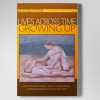Szajnberg, NY Jan 2007
I have two related goals today. First to describe four different psychoanalytic studies and the challenge of finding ways – methods – to learn about our “subject” — our inner life – when our primary instrument to study this is – our inner life. Second, if we have time, I want to encourage our thinking about our psychoanalytic community as a community of scholars by looking at previous communities of inquiry.
Art Nielsen asked me to present some of my research to discuss the challenge of seeking proper ways to investigate inner life from a psychoanalytic perspective. I will present four studies: two I have completed – one on child development, the second on Israeli soldiers; two in process – a study of immigrant Ethiopian children, the second of character structure and change in psychoanalysis.
A major challenge to psychoanalytic investigation is a constraining social science model of how research should be done: observable matters that can be measured in a statistical manner. Engraved in stone on the face of the Social Science Building at the University of Chicago is a quote from Lord Kelvin, the chemist – I paraphrase — “If it can’t be measured, it can’t be proven.” A Chicago faculty member seeing this commented sarcastically, “If it can’t be measured, do it anyhow.”
Some problems with statistics may be solved with improved statistical methods, such as Guttman’s Partial Order Scalogram Analysis or Small Space Analysis. But, this solves only some problems. A fundamental problem or challenge is the nature of our subject – inner life – and our primary instrument – our inner life. When self-psychologists state that empathy is the major method of cure, how do we “measure” that? It approaches an aesthetic judgment in art. Let me turn to the four studies, focusing not on the results, primarily, but on how we learned about our subjects.
Ethiopian Children growing up in Israel: Identit(ies), Relationships, Inner lives in Transition:



